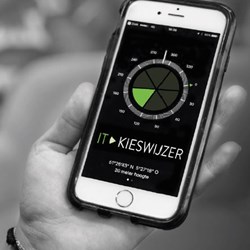There is something to choose again
There is something to choose again
In the current Dutch political situation, it seems as if we’ll have new elections again every few weeks. And not everyone is looking forward to that. But it did remind me on how nice it is that in the world of legal tech and 'traditional' law firm automation, there is now something to choose from again. And how important that is.When we introduced the Dutch Legal tech Radar in 2018, we started with approximately 80 software applications specifically aimed at the legal market. By now, there are almost 140 products listed, and we probably haven't listed all the new players yet. Good news for law firms who, for whatever reason, are considering to replace a current product or buy something new. It's nice to have something to choose from, right? But what choices are there to make?
Choice 1: Cloud or on-premises
A choice that 10 years ago still led to headaches but now really seems to have been settled in favour of the (Microsoft) cloud. But there was a lot that preceded it.
In the first decade of this century, a movement was set in motion from own servers (on-premises) to servers in a data centre somewhere in the Netherlands hosted by the firm's (external) IT server provider. This solution, where you could log into your work environment from any PC or laptop via tools like Citrix or another remote desktop tool, had great advantages over the old situation and, on the other hand, provided enough comfort that IT was also in good hands outside the firms premises. However, the tech world developed rapidly, and applications were increasingly built as real web applications. As a result, you didn't really need servers anymore, as data storage was done at the respective suppliers. This allowed more and more firms to skip the 'intermediate step' of a hosted server in an external data centre. With the rise of Office365, with SharePoint and Teams as storage locations and Microsoft Azure for management, this trend has taken off. We hardly see any firm that - faced with the choice - still opts for a hosted solution.
What we do see is that some lawyers have difficulty with the consequence of having to 'lug around' their own laptop every day. At least, in advance. Once the modern workplace is set up, and people have experienced the improvements in (especially) speed, convenience, and stability, those objections generally disappear quickly.
We also see that most suppliers have followed this development. For example, Wolters Kluwer has converted its PMS (Kleos) into a web version, and Urios offers its solution in both flavours.
Choice 2: All-in-one or best of breed
In the past, best of breed, where you buy a separate application for each process within your firm and where those applications communicate with each other, was not feasible for medium-sized firms, let alone firms with fewer than 30 lawyers. Making applications communicate with each other was technically complicated and therefore expensive. However, with the move to the cloud, this has changed enormously. Thanks to so-called APIs, in theory, any (web) application can be linked, and we see that the widely used systems in the legal profession have now made all the obvious links at least once. For example, Legalsense can be linked to any popular DMS, and CRM systems like Hubspot or applications for templates like DoLegal and LegalWord can now relatively easily retrieve the necessary file information from so-called practice management systems (for file administration).
But not every firm is happy with different applications. After all, you have a somewhat more complicated implementation process ahead of you because you have to deal with multiple suppliers. Fortunately, there are still various 'all-in-one' solutions to choose from. And those are increasing again. Besides the well-known solutions like Kleos, Basenet, and NextLegal, the American vendor Clio is now also focusing on the Dutch market, so there is still plenty to choose from within this setup. A nice development, in my opinion!
Choice 3: Document management and practice management systems
A Document Management System (DMS) is crucial for managing legal documents and emails. There are several DMSs available, so there is something for everyone. A DMS can be integrated into the all-in-one solution described above, a hybrid construction can be chosen (i.e., integrated into an all-in-one solution or as a separate DMS linked to such a system), or a DMS can be part of a best-of-breed setup.
And for that last scenario, we now see a lot of movement in the market as NetDocuments is again focusing on the Netherlands as an alternative to iManage and DMSforLegal from Epona. The latter DMS, by the way, like Intapp Documents, is built on Microsoft SharePoint, and that concept is now gaining popularity again with the introduction of Microsoft Copilot365 as a Generative AI assistant.
In the world of practice management systems, the choices have been somewhat disappointing in recent years if your firm opted for a best-of-breed setup. Legalsense is heading for a monopoly position as it gains many firms that previously used Aderant. Earlier competitors, such as the Swedish Lex247, do not seem to be shaking the tree as hard anymore, but for those who like choices, there is now fortunately Norriq, based on Microsoft Dynamics, which, according to its sponsorship at the largest legaltech convention in the Netherlands: Lexpo this year, also wants to conquer the Dutch market.
In other words: choices, choices, choices. And we haven't even mentioned the AI solutions that are springing up like mushrooms. I'll save those for a future blog.
Having trouble choosing? Marjan, Rob, and Eva are happy to help you get started!
